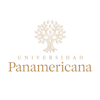BRICS countries and the states aspiring to join this union focus on rapid development, leveraging their population size and quality.
The City Human Potential Ranking (CHPR) evaluates the cities – leaders in development within these countries based on the criteria significant for concentrating and harnessing the potential of their populations as the foundation for their socio-economic development.
Evaluating the opportunities provided by the urban institutions for the development and realization of population’s potential.

Evaluating the quality and prospects for the development of population’s potential.





On January 18, 2024 the final report of the City Human Potential Ranking was published.
The next edition of CHPR will be published in December 2024.